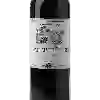
Winery Romaric AufrancMorgon Cuvee Vieilles Vignes
In the mouth this red wine is a with a nice freshness.
This wine generally goes well with pork, poultry or veal.
Taste structure of the Morgon Cuvee Vieilles Vignes from the Winery Romaric Aufranc
Light | Bold | |
Smooth | Tannic | |
Dry | Sweet | |
Soft | Acidic |
In the mouth the Morgon Cuvee Vieilles Vignes of Winery Romaric Aufranc in the region of Beaujolais is a with a nice freshness.
Food and wine pairings with Morgon Cuvee Vieilles Vignes
Pairings that work perfectly with Morgon Cuvee Vieilles Vignes
Original food and wine pairings with Morgon Cuvee Vieilles Vignes
The Morgon Cuvee Vieilles Vignes of Winery Romaric Aufranc matches generally quite well with dishes of pasta, veal or pork such as recipes of pork filet mignon with foie gras and rosemary, roast pork with onions and honey or roast pork with mustard and honey.
Details and technical informations about Winery Romaric Aufranc's Morgon Cuvee Vieilles Vignes.
Discover the grape variety: Marsanne
Marsanne is a white grape variety that originated in Montélimar in the Drôme, several centuries ago. Marsanne is also found in Cassis, Savoie, Languedoc-Roussillon and Saint-Péray in the Ardèche, where it produces remarkable sparkling wines. The warm, sunny climate of the Rhone Valley, Languedoc-Roussillon and Provence, as well as the dry, stony soil, are ideal conditions for its development. Its bunches are quite large and provide small, juicy berries that are sensitive to grey rot and strong winds. These two grape varieties complement each other perfectly: together they give light wines with little acidity, aromas of yellow fruit, white fruit and flowers with notes of honey and liquorice. This is for example what the appellations Saint-Péray, Hermitage, Crozes-Hermitage, Saint-Joseph, Côtes-du-Vallée du Rhône, Corbières, or Cassis express... which represent about 700 hectares.
Informations about the Winery Romaric Aufranc
The Winery Romaric Aufranc is one of of the world's greatest estates. It offers 6 wines for sale in the of Beaujolais to come and discover on site or to buy online.
The wine region of Beaujolais
Beaujolais is an important wine region in eastern France, famous for its vibrant, Fruity red wines made from Gamay. It is located immediately South of Burgundy, of which it is sometimes considered a Part, although it is in the administrative region of Rhône. The extensive plantings of Gamay in this region make Beaujolais one of the few regions in the world that is so concentrated on a single Grape variety. Pinot Noir is used in small quantities in red and rosé wines, but in the name of regional identity, it is being phased out and will only be allowed until the 2015 harvest.
The word of the wine: Sarment
Vine shoot of the year.














